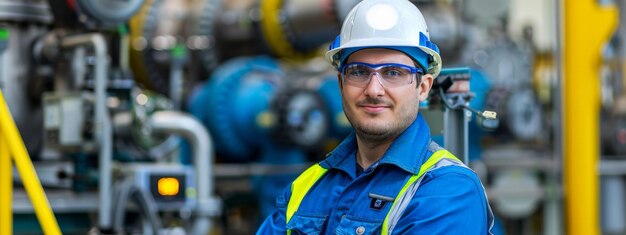

Ensuring compliance with safety regulations through proactive maintenance is paramount for any organization operating within the industrial or manufacturing sector. A tragic accident involving machinery or equipment can be devastating to human lives, and have serious financial and reputational repercussions. Maintaining compliance with safety regulations is not merely an option but a fundamental responsibility that directly affects the wellbeing of employees, protects assets, and upholds corporate integrity. This article delves into the crucial role of maintenance in meeting safety regulations and outlines practical strategies for ensuring compliance. We will explore the importance of a structured maintenance schedule, the critical role of regular inspections, and the benefits of implementing advanced maintenance technologies.
The Importance of a Proactive Maintenance Approach
Establishing a Robust Maintenance Schedule
A robust maintenance schedule is the cornerstone of ensuring compliance with safety regulations. It provides a framework for regular inspections, repairs, and replacements of equipment, preventing potential hazards before they escalate into incidents. Creating a detailed schedule, considering equipment usage, and factoring in potential maintenance tasks allows for proactive measures that minimize the risk of equipment failure and associated safety violations. A well-defined schedule also improves efficiency and reduces downtime, contributing to the overall profitability and smooth operations of the organization. For instance, a company that consistently schedules maintenance for critical machinery based on manufacturer recommendations experiences a dramatic reduction in unexpected breakdowns and safety issues.
Identifying Potential Hazards Through Regular Inspections
Regular inspections are vital to identifying potential safety hazards early on. Regular checks are crucial to ensure that equipment continues to function within its safe operating parameters. Using checklists and structured procedures helps ensure that all crucial elements are examined. Visual inspections, coupled with appropriate tests and measurements, can proactively identify issues like loose bolts, worn belts, or faulty wiring, mitigating the likelihood of accidents, and protecting both personnel and equipment. Companies that prioritize regular inspections and maintain detailed inspection reports tend to experience fewer accidents and less downtime compared to those without such a system.
Implementing and Enforcing Safety Protocols
Implementing clear safety protocols is essential to ensure compliance. Clearly defined safety procedures are crucial to preventing accidents and injuries. Employees need to know what actions to take in case of a malfunction or potential hazard. Safety protocols should outline the responsibilities of each employee involved in the maintenance process, ensuring accountability and promoting a proactive safety culture. Developing and implementing comprehensive safety protocols not only minimizes the risk of workplace accidents, but also minimizes the negative implications of non-compliance, including legal penalties and financial repercussions.
Related Post : Recognizing Early Warning Signs of Vehicle Maintenance Needs.
Advanced Technologies for Enhanced Safety Compliance
Leveraging Predictive Maintenance
Predictive maintenance techniques utilize data analysis and sensors to anticipate potential equipment failures before they occur. By monitoring vibration levels, temperature fluctuations, and other key performance indicators, predictive maintenance allows for proactive intervention, minimizing unexpected downtime and ensuring safety compliance. Data analysis can be used to identify patterns or anomalies that might precede a failure, enabling preemptive actions to prevent accidents. This predictive approach has been particularly successful in preventing major equipment failures in various manufacturing settings.
Implementing Automated Inspection Systems
Automated inspection systems are becoming increasingly sophisticated, providing detailed and accurate data on equipment condition. These automated systems can automatically detect potential issues like wear, tear, and damage, minimizing the risk of human error in identifying these hazards. The use of AI and machine learning further improves the accuracy and efficiency of these automated systems, allowing for more comprehensive inspections and proactive identification of safety-related issues. Using these technologies has improved safety and maintenance in numerous industrial settings, leading to reduced maintenance costs and fewer safety incidents.
Training and Education for Safety Compliance
Employee Training on Safety Regulations
Regular training sessions should be conducted to inform workers about the relevant safety regulations. Training programs should cover the importance of proper maintenance procedures, the safe operation of machinery, emergency procedures, and reporting processes. This empowers employees to identify and respond to potential hazards effectively, contributing to a culture of proactive safety compliance.
Specialized Training for Maintenance Personnel
Maintenance personnel should undergo specialized training on the safe operation and maintenance of specific equipment. This training should encompass the proper techniques for maintenance and repair, including the use of safety equipment, lockout/tagout procedures, and hazard identification processes. This specialized training ensures that maintenance activities are performed in a safe and compliant manner.
Ongoing Safety Audits and Review
Ongoing safety audits and reviews are essential for ensuring compliance with safety regulations and implementing improvements. The frequency and scope of audits should be tailored to specific equipment or processes. Audits should be performed regularly to assess the effectiveness of existing safety protocols, identify deficiencies, and make necessary changes to enhance safety compliance.
Case Studies and Real-World Examples
Implementing a Predictive Maintenance System in a Manufacturing Plant
[Insert case study example – hypothetical or real – about a company that implemented a predictive maintenance system and the positive results].
Improving Safety Inspections in a Construction Site
[Insert case study example – hypothetical or real – about a construction site that improved its safety inspections and the impact on safety compliance].
Measuring and Evaluating Safety Performance
Establishing Metrics for Safety Compliance
Establishing metrics for measuring safety performance is crucial for evaluating compliance efforts. This includes tracking incidents, near misses, and inspection results to identify areas requiring improvement. Data-driven metrics allow for targeted interventions and demonstrate the effectiveness of safety programs.
Regularly Reporting on Safety Performance
Regular reports on safety performance provide valuable insights into the effectiveness of maintenance strategies. These reports should be reviewed by management and discussed to ensure continuous improvement.
Q: What are the most common safety violations related to maintenance?
A: Common maintenance-related safety violations often include failing to follow lockout/tagout procedures, improper use of safety equipment, inadequate hazard communication, and neglecting regular inspections. A thorough risk assessment can help prevent potential safety hazards before they escalate to incidents. A culture of safety compliance needs to be encouraged through clear guidelines, effective communication, and ongoing monitoring.
Q: How can I ensure my employees understand safety regulations?
A: Regular training sessions that cover the importance of safety regulations, the proper use of equipment, emergency procedures, and reporting mechanisms are crucial for employee understanding. Empowerment through training empowers employees with the knowledge and skills to comply effectively. Clear communication and ongoing reinforcement are key to establishing a safety-conscious culture.
Q: What are the benefits of using predictive maintenance?
A: Utilizing predictive maintenance allows organizations to identify potential equipment failures proactively. This reduces the likelihood of unexpected breakdowns, minimizes downtime, and enhances safety compliance. This approach also lowers maintenance costs in the long run by preventing catastrophic failures that are expensive to repair or replace.
Ensuring compliance with safety regulations through proactive maintenance is crucial for preventing accidents, minimizing downtime, and upholding a positive safety culture. By implementing a robust maintenance schedule, performing regular inspections, and adhering to safety protocols, organizations can significantly reduce the risk of safety incidents. Furthermore, investing in advanced maintenance technologies and training employees on best practices will enhance safety standards and promote a culture of responsibility. For a complete guide to implementing these strategies, contact [your company name/website] today for a free consultation.